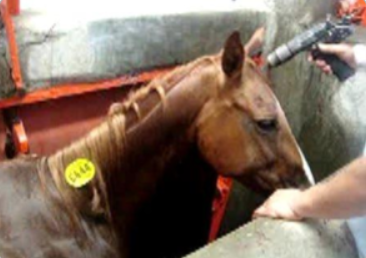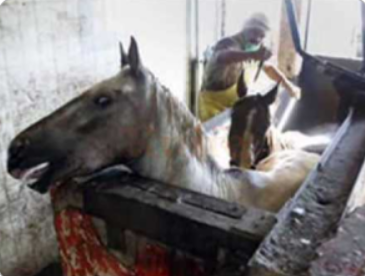In 1986, a beautiful 3-year-old Thoroughbred named Ferdinand won the Kentucky Derby, placed second in the Preakness, and third in the Belmont. In 1987 he won the Breeder’s Cup and the prestigious Horse of the Year award. He was a true American hero and was sold for big dollars to a Japan racing syndicate.
In 2002, Ferdinand, while still conscious—had his skull fractured with a four inch bolt. His hind leg was dislocated from the hip joint as a chain hoisted him in the air. While he hung upside down by one leg, his throat was slit with a knife. Still conscious, as he bled to death...he took his final breath in a Japanese slaughter-house.
This magnificent animal, forgotten and alone, wasn’t lame or sick—he just wasn’t wanted any longer. His years of making money as a racehorse and Stallion for breeding were over. Although he had years of life still ahead of him as a useful horse, he wasn't given that chance. Sadly, this kind of ending is common for horses—even for famous champions.
When a performance horse is injured and cannot be useful in a breeding program, owners often squeeze a few more dollars out of their horse and sell him or her to a slaughterhouse. With the ever-increasing demand of horsemeat for human consumption in Europe and Japan, this kind of gruesome end for these noble creatures continues.
Last year, over 150,000 horses were shipped live over the borders to Canada and Mexico for slaughter. According to Nick Zito, a famous Thoroughbred racehorse trainer, over 45 percent of these horses come from the racing industry. Healthy horses that will not become high stakes winners for their owners and trainers are disposed of to make room for the next batch of potential winners.







